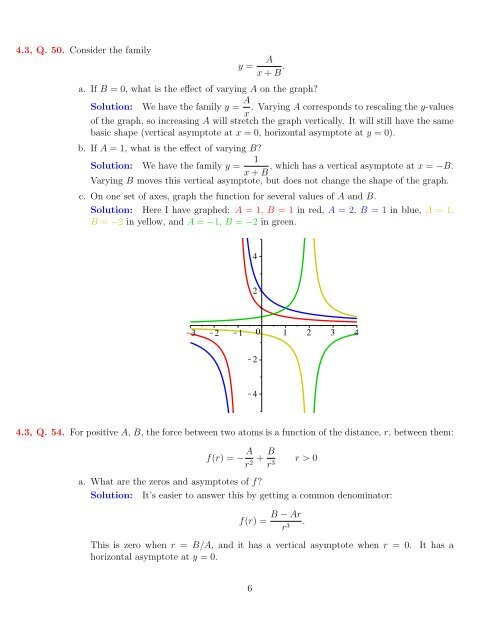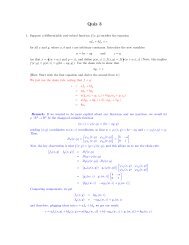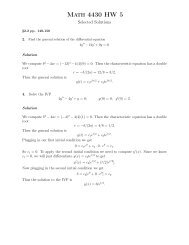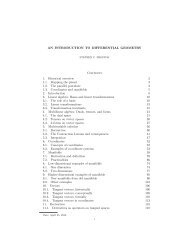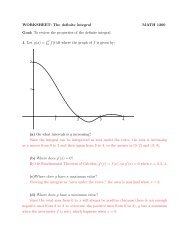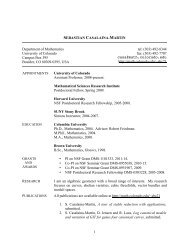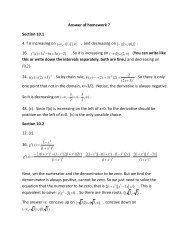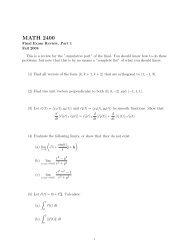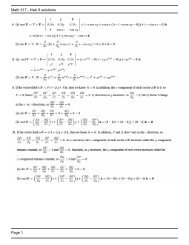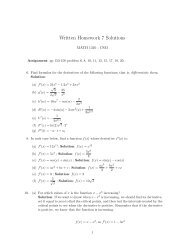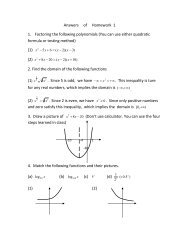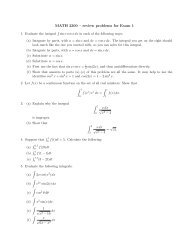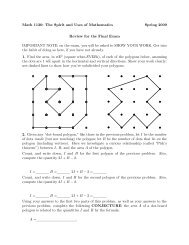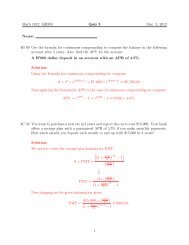Math 1300 Written Homework #10 Solutions 4.2, Q. 24. Let y = at 2e ...
Math 1300 Written Homework #10 Solutions 4.2, Q. 24. Let y = at 2e ...
Math 1300 Written Homework #10 Solutions 4.2, Q. 24. Let y = at 2e ...
Create successful ePaper yourself
Turn your PDF publications into a flip-book with our unique Google optimized e-Paper software.
4.3, Q. 50. Consider the family<br />
y = A<br />
x + B .<br />
a. If B = 0, wh<strong>at</strong> is the effect of varying A on the graph?<br />
Solution: We have the family y = A<br />
. Varying A corresponds to rescaling the y-values<br />
x<br />
of the graph, so increasing A will stretch the graph vertically. It will still have the same<br />
basic shape (vertical asymptote <strong>at</strong> x = 0, horizontal asymptote <strong>at</strong> y = 0).<br />
b. If A = 1, wh<strong>at</strong> is the effect of varying B?<br />
Solution: We have the family y = 1<br />
, which has a vertical asymptote <strong>at</strong> x = −B.<br />
x + B<br />
Varying B moves this vertical asymptote, but does not change the shape of the graph.<br />
c. On one set of axes, graph the function for several values of A and B.<br />
Solution: Here I have graphed: A = 1, B = 1 in red, A = 2, B = 1 in blue, A = 1,<br />
B = −2 in yellow, and A = −1, B = −2 in green.<br />
4.3, Q. 54. For positive A, B, the force between two <strong>at</strong>oms is a function of the distance, r, between them:<br />
f(r) = − A B<br />
+<br />
r2 r3 r > 0<br />
a. Wh<strong>at</strong> are the zeros and asymptotes of f?<br />
Solution: It’s easier to answer this by getting a common denomin<strong>at</strong>or:<br />
f(r) =<br />
B − Ar<br />
r3 .<br />
This is zero when r = B/A, and it has a vertical asymptote when r = 0. It has a<br />
horizontal asymptote <strong>at</strong> y = 0.<br />
6


